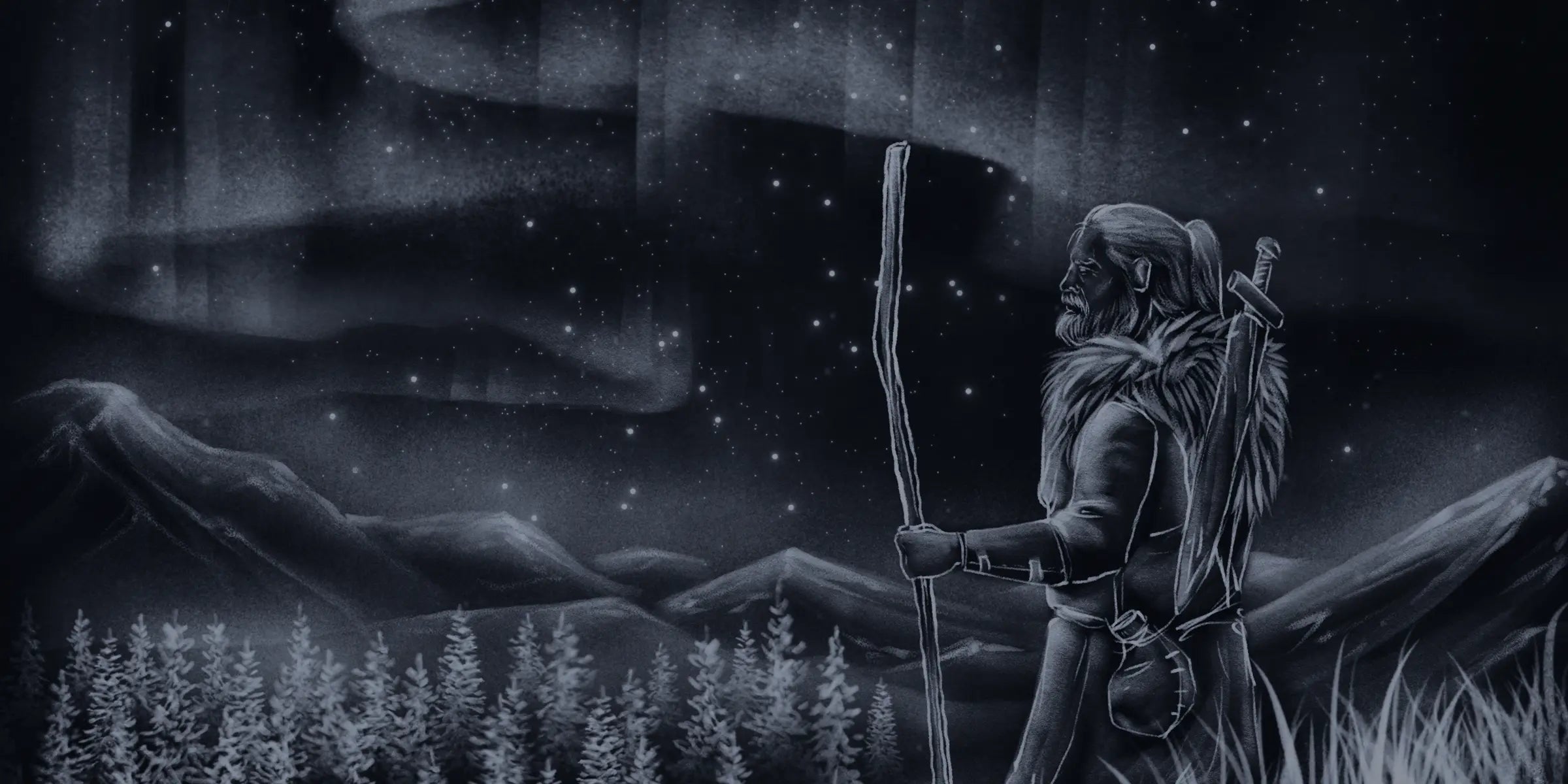
The Vegvísir Is Not A Viking Compass
Im Sorry To Say, You've Probably Been Misinformed
You aren't alone, and I'm certainly on no high horse with this post.
My first tattoo was the Vegvísir, which I found on the first page of Google and just accepted that it was the Viking Compass. I made this post to put some good information out there and help you stay well informed! The Vegvísir, a symbol revered and widely used by modern pagans, has experienced a fascinating evolution in contemporary times.
Widely embraced by neo-pagans, musicians, reenactors and enthusiasts of Viking-themed media, the Vegvísir's modern portrayal has led to intriguing shifts in its interpretation and usage. Within this post, I'm going to delve into the modern concept of the Vegvísir, tracing its journey from ancient grimoires to its present popularity and clarifying its true historical significance.
For those who dont wish to read everything, heres a simple conclusion for you,
The Vegvísir is 100% not a Viking symbol and certainly not a Viking compass, it is a much younger symbol with a meaning that is often misunderstood and misinterpreted. The Sorcerers Screed is a great book on Icelandic magic - 'galdrastafir' and below is the translation from the original grimoire.
You've probably seen some of these forms online, commonly being sold as dirt tier 'Viking Compass' products,
The reality is, people hop onto trends, and the Vegvisir is a very popular symbol with those new to Norse Paganism. And that's no coincidence. Visually, it's beautiful, and the idea of a historical symbol used by the Vikings, who were known for being seafarers, is something that many feel drawn to.
So if not a Viking Compass, what is the Vegvisir?
In today's landscape, the Vegvísir has gained considerable attention across various communities, from neo-pagan circles to pop culture enthusiasts. It has found its place in clothing, jewelry, and even tattoos, often reflecting a fusion of its original meaning with contemporary interpretations.
The modern perception of the Vegvísir frequently associates it with being a Germanic and Viking magical rune symbol functioning as both a compass and a protector for seafaring Viking warriors. This perspective, however, primarily resides in recent romantic fiction and popular literature, rather than historical accuracy.
Additionally, the modern Vegvísir is often presented within a circle of runes - The Elder Futhark Runes. This particular set was phased out before the Viking age, in favour of the younger Futhark.
The Real Vegvísir:

The Vegvísir first appears in the Huld Manuscript, collected and documented in Iceland by Geir Vigfusson in Akureyri in 1860. For reference, the Viking era in England came to a decisive close in 1066 when King Harold of England led his forces to victory against the formidable Viking ruler, Harald Hardrada of Norway.
The Battle of Stamford Bridge, situated near York, marked the culmination of this historical conflict. This could roughly be considered the end of the 'Viking Age,' so we're looking at roughly 800 years between the end of the Viking age and when the Vegvísir was documented in the Huld Manuscript in 1860.
So What's the REAL Meaning of The Vegvísir?

THE MEANING OF THE VEGVISIR
'Carry This Stave With You And You Will Hardly Ever Lose Your Way In A Storm, Or Die Of Exposure. You Will Find Your Way Even In An Unfamiliar Place'.
Personally, I love and hate this symbol, and I'll explain why.
My first tattoo was the Vegvísir, and I 100% got it with the elder Futhark runes thinking it was the 'cool Viking compass.' I'm not about to lie and pretend that I didn't, just for the sake of sparing my own ego. As such, that tattoo is a representation of my own gullibility and lack of research.
On the other hand, it's an absolutely beautiful symbol. If you're considering getting a tattoo of the Vegvísir, go for it. My only advice is to do your own research on top of what you've read here and understand what you're putting on your body. At the very least you should know what you're putting on your body before doing it.
I like working with the Vegvísir too, and I'm more than happy to use it in my art. For me though, I've always seen it as a bit cliché, and I'll always prefer the option of creating a custom stave or bindrune, which in my eyes is far more meaningful.
So. In conclusion:





